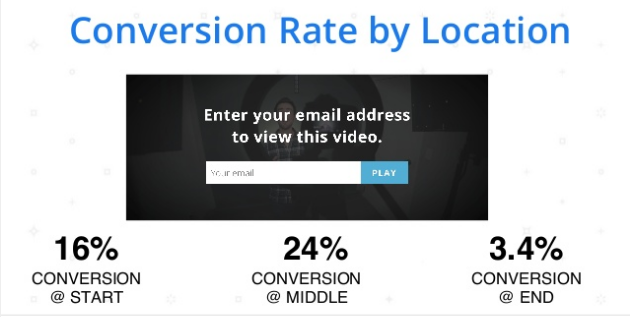 Spoiler Alter – videos crush marketing goals for both B2C and B2B businesses. Video is simply another type of content which isn’t restricted to any one industry or type of business.
Spoiler Alter – videos crush marketing goals for both B2C and B2B businesses. Video is simply another type of content which isn’t restricted to any one industry or type of business.
Considering this, the team at VA Partners has been working to explore how video can be incorporated in our B2B marketing strategy. In perfect timing, Uberflip recently hosted a webinar called, How to Use Video to Crush your B2B Marketing Goals featuring Phil Nottingham from Wistia.
In this blog post, I will review 3 major B2B goals many businesses have and how video can help accomplish them.
1. Generate Leads
A great way to generate leads with video for B2B businesses is to add a turnstile to your content. This is essentially adding a form to your video. A video is generally structured with a nose, body, and tail. After conducting tests at Wistia, it is recommended to add the turnstile right after the nose. This is to capture leads who are engaged enough to want to learn more, but haven’t gotten into the meat of your video yet. This type of lead generation works best for long-form content such as lectures, webinars, and courses.
A huge benefit that comes with video for B2B is that you are able to get granular detail about your audience’s behaviour. For example, you don’t necessarily see how much of a blog post is read, but with a video you know exactly how much of the content was consumed. This can then enable you to carry out lead scoring and cater further messages to specific groups. B2B videos are a great addition to email and other automation campaigns.

2. Conversions
After you capture your lead, the next step is to move your lead towards conversion. In this stage, create B2B videos that are product based. Aim for authenticity over professionalism. It can be unappealing to see stock images of “happy business people” on a website – same goes for video. Remember to show your products and services, don’t tell. This can be in the form of a screen share if you have software, or how your team works if you provide a service. A few quick tips that has worked for Wistia and their customers include, keeping your product video under 2 minutes, customizing a thumbnail, branding your video player, and writing a compelling call to action.
3. Word of Mouth
Word of mouth marketing has always provided great value to businesses. When translated into the digital space, word is mouth is referred to general brand awareness. It’s about making your content, and video content specifically, shareable. To devise a strategy for shareable videos, you’ll first need to determine your place in the market. Check out the image before to help you figure out what types of video work best for your business.
In order to create shareable videos you will also need to choose which video platform you want to publish on; the 2 biggest ones being YouTube and Facebook. The major difference between the two is that YouTube viewers are active users and Facebook has more passive users. I thought this was a great way to differentiate the two platforms. No matter what you choose, remember to create a schedule for your videos, measure your successes, and continue to make improvements.

Video has been a huge marketing trend over the past few years. Have you considered video as part of you B2B Marketing strategy? Check out our explainer videos for some inspiration.
If you’re interested, Uberflip has more great sales, marketing and social media webinars available in their hub.
